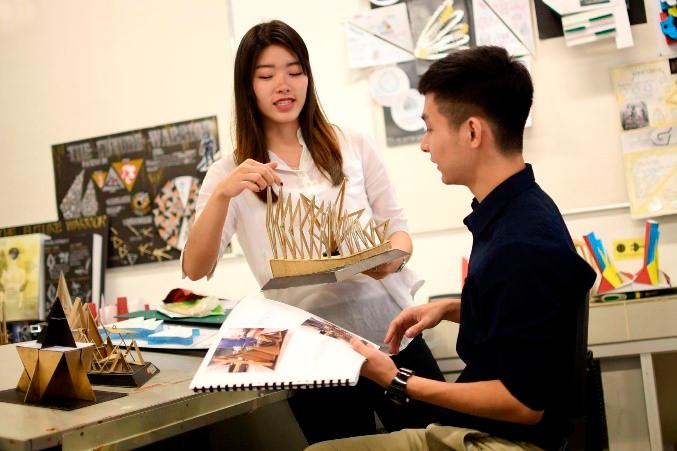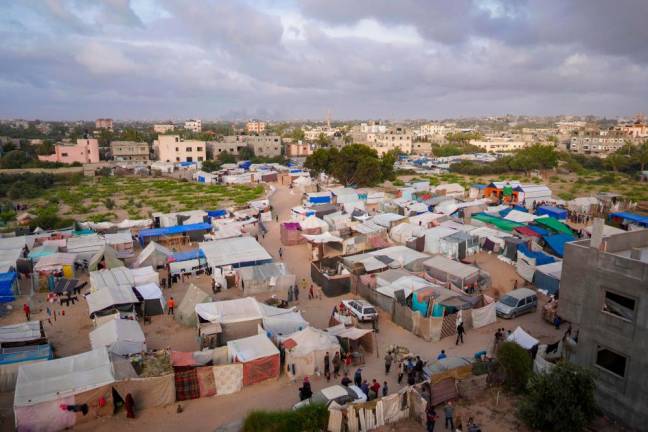MUCH more than being designed just to be aesthetically attractive, green buildings are good for the environment. They impact consumers’ choices and decisions based on the idea of sustainability. In fact, sustainability itself has become the very focus of architects today when designing these green buildings.
At a more ambitious level, green cities are being eyed and developed, and green buildings play an important role. Suffice to say, achieving that ambition will require more architects with insightful understanding on sustainability, along with good skills and knowledge of the building industry. After all, what is a green city without green buildings?
But before aspiring architects can contribute to making the world more sustainable, they first have to be qualified for the job. That would mean enrolling in a certified course such as the Bachelor of Science (Honours) Architecture programme, offered at Universiti Tunku Abdul Rahman (UTAR). The programme is a recognised first tier of a two–tier professional architecture education, complying with Lembaga Arkitek Malaysia (LAM) Part I requirements.
“Our programme is designed to provide students with a strong foundation, which equips them to work well in a semi-professional capacity in architecture or related fields in the building industry. With the growing emphasis on sustainability, sustainable design has become one of the main goals and objectives of the programme, and we embedded this component in our design studio,” said Ts Tan Kok Hong, who heads the Department of Architecture and Sustainable Design.
In relation to sustainability, the programme is related to the United Nations Sustainable Development Goal (SDG) 11: Sustainable Cities and Communities.
“In particular, it is to strengthen efforts to protect and safeguard the world’s cultural and natural heritage, and provide universal access to safe, inclusive accessible, green and public spaces. The programme also aims to support the building of sustainable designs and resilient buildings by utilising local materials,” said Tan.
As an example of the programme’s success in nurturing sensible architects, Architecture student Lim Chen Hee received the Best Green Innovation Award at the Asia Young Designer Awards 2020 recently. The competition encouraged participants to apply a holistic approach, which was aligned with SDG 7, 9, 11 and 13. The award ceremony was held online in January, and Lim received RM1,000 cash and a certificate for his project titled “Lost and Found in Paradise”.
“I have always believed that architecture can change the world and people, and create a better lifestyle. My project uses local mobility to transform a new kind of architectural design, as well as a solution to spread the massive growth of Kampung Perting in a sustainable, social and economic way. I believe that could have contributed to my win, and I am very grateful for this recognition. I am also thankful to UTAR and my lecturer Ar Loh Khang Yong,” said Lim.
“Since 2016, we have converted Architecture field trips into compulsory courses that enable our students to participate in exchange programmes with overseas partner universities. They will be involved in short-term workshops, seminars and even competitions. Our students have greatly benefited from these activities, and these have enabled them to learn through cross-culture exposure,” said Tan.
The benefits are not limited to that, as upon completing the architecture programme, students will be able to use innovative and creative means in problem solving. Students will also apply their learning experiences with adequate knowledge of physical problems and technologies so as to provide a comfortable and safe environment.
“Our students are also encouraged to participate in external competitions, which allow them to experience peer learning from other institutions. The stringent and strict requirements from the organisers could also challenge their creativity and innovation to think out of the box and expand their boundaries,” added Tan.
In addition, students will also acquire the skills to design a system or component to meet desired needs in design and construction problems associated with building design and environment. The programme nurtures students to relate the importance of built environment issues such as ethics, culture, social harmony, entrepreneurship, human relations and green technology as well as incorporating them in the built environment.
The career prospects for architecture graduates are wide, with options including Assistant Architect/Designer, Draft Person, Architectural Illustrator, Project Executive, Assistant Project Manager and contractor. Graduates may even choose to pursue post-graduate studies in related fields such as architecture, urban planning, landscape architecture, construction management, urban design or interior design.
UTAR is regarded as one of the fastest growing private higher education institutions in the country since its inception in 2002. From only 411 students, the university now has about 22,000 students, with campuses located in Kampar, Perak and Bandar Sungai Long in Selangor.
The university currently offers more than 120 programmes from Foundation Studies to Bachelor’s, Master’s and PhD degrees in the fields of Accounting, Business, Finance and Economics, Actuarial Science, Mathematics and Process Management, Agriculture and Food Science, Arts, Social Sciences and Education, Chinese Studies, Creative Industries, Digital Animation, Multimedia and Design, Engineering, Technology and Built Environment, Information and Communication Technology, Life and Physical Sciences, and Medicine and Health Sciences.
UTAR was ranked in the #501-600 bracket in the Times Higher Education World University Rankings 2021, placed at #157 in the Quacquarelli Symonds (QS) Asia University Rankings 2021, and was awarded Self-Accreditation Status by the Malaysian Qualifications Agency.
For more information, visit www.utar.edu.my or call 05-468 8888 (Kampar Campus) or 03-9086 0288 (Sungai Long Campus).










